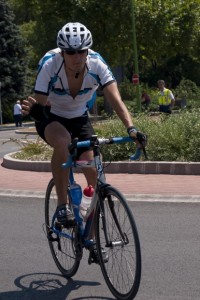The growing number of cyclists in Boston has been great for the environment, for personal health and for the city’s culture. The U.S. Census Bureau reported that of the 318,000 employees in Boston, 1.7 percent biked to work. That’s a 70 percent increase from the number who did so in 2000. That doesn’t include the number who have picked up the activity for recreation or those who do so as a way to get to and from classes. 
Our Boston bike attorneys are thrilled at the traction the sport has gotten in recent years. But we also recognize it has also coincided with an uptick of bicycle accidents.
Most serious bicycle accidents in Boston happen as a result of a car or other vehicle colliding with a cyclist. Cyclists are often competing with drivers and pedestrians for space as they navigate through construction, gridlocked intersections and double-parked vehicles. Whether it’s “dooring” or being cut off by a driver who doesn’t see you, cyclists are taking a risk every day. Many may have grounds for compensation for those injuries, but obtaining it can be tough without an experienced attorney.
The Boston bicycle accident lawyers at Jeffrey Glassman Injury Lawyers and bikeattorney.com are experienced in representing injured riders.
Part of the problem is that this influx of new cyclists lacks extensive experience in how to avoid a crash. This is not to say new riders are primarily responsible for the accidents that injure them, but avoiding road hazards on a bike in an urban center requires skill. Unfortunately, too many cyclists put their trust in bike lanes. The reality is, those lines are no guarantee the riders won’t get hit. We recommend any novice cyclist – or anyone picking it up again after a long absence – take a bicycling safety course to improve their skill and knowledge.
These cases are sometimes an uphill legal battle because, unfortunately, sometimes law enforcement takes a casual attitude toward reporting bike vs. car accidents. Take an example offered by The Washingtonian in D.C., where a 62-year-old daily cyclist was struck by a vehicle on Pennsylvania Avenue. She suffered back and shoulder injuries and when she sought compensation from the driver’s insurer, found the police report was both incomplete and inaccurate. Claimant says there was “a sea of blue” after the accident, but not one of those officers jotted down the names of witnesses that would have been crucial to proving her case.
That’s just one example of why, at an accident scene, victims need to be their own advocate – or take the initiative to help other cyclists. That means taking pictures (or better yet, wearing a GoPro camera when you ride). It means gathering witness names and contact information. It involves seeking immediate medical attention so the injuries are well-documented. (Plus, when a rider’s adrenaline is raging, they may be seriously hurt and not know it right away.)
Finally, there is the issue of contributory negligence. Defendants in bicycle accident cases will often assert that cyclists did something that caused or contributed to their own injuries. This won’t eliminate your right to compensation unless you are more than 50 percent at-fault. However, it can significantly reduce the amount of damages you can collect. The onus will be on your bike accident attorney to show why you shouldn’t shoulder that share of the blame.
If you or someone you love has been injured a Boston bicycle accident, call for a free and confidential appointment at 617-777-7777.
Additional Resources:
How Big is Cycling? Big Enough to Have Its Own Personal Injury Lawyer. April 11, 2016, By Jeff Johnson, The Washingtonian
More Blog Entries:
Boston Bicyclists Navigate Treacherous Landscape, March 20, 2016, Boston Bicycle Accident Lawyer Blog
 Bike Accident Lawyers Blog
Bike Accident Lawyers Blog

